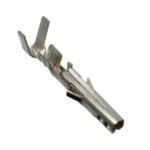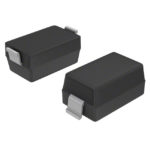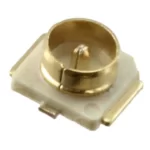Exploring the World of Discrete Semiconductors: A Comprehensive Guide
As a semiconductor enthusiast, I have always been fascinated by the world of discrete semiconductors. The ability of these tiny devices to control electron flow and perform complex functions is truly amazing. In this comprehensive guide, I will take you through the world of discrete semiconductors, their types, role in electronic devices, advantages over integrated circuits, factors to consider when choosing them, popular manufacturers, applications in different industries, and future prospects.
Introduction to Discrete Semiconductors
Discrete semiconductors are electronic components that are used to control the flow of electricity. They are called “discrete” because they are separate and distinct from each other, unlike integrated circuits that are made of several components on a single chip. Discrete semiconductors can be made of different materials such as silicon, germanium, and gallium arsenide. They can be used in a wide range of applications such as rectifiers, transistors, diodes, and power amplifiers.
Types of Discrete Semiconductors
There are several types of discrete semiconductors, each with its unique properties and applications. Some of the common types include diodes, bipolar transistors, field-effect transistors (FETs), and thyristors. Diodes are used to control the flow of current in electronic circuits. Bipolar transistors are used for switching and amplification. FETs are used in low-power applications such as in mobile phones and laptops. Thyristors are used in high-power applications such as in power grids and electric vehicles.
Understanding the Role of Discrete Semiconductors in Electronic Devices
Discrete semiconductors play a crucial role in electronic devices. They are used to control the flow of electricity, amplify signals, and switch circuits on and off. For example, diodes are used to convert AC current to DC current, which is essential for powering electronic devices. Transistors are used to amplify signals in radios and televisions, while FETs are used to control the flow of current in laptop batteries.
Advantages of Discrete Semiconductors Over Integrated Circuits
Discrete semiconductors have several advantages over integrated circuits. First, they are cheaper to manufacture because they do not require the complex manufacturing processes used in making integrated circuits. Second, they are more flexible because they can be used in a wide range of applications. Third, they are more reliable because they are less prone to failure due to their simple design. Fourth, they are easier to repair because they can be replaced individually.
Discrete Semiconductors vs. Power IC Modules
Discrete semiconductors are often compared to power IC modules, which are integrated circuits that are designed specifically for power applications. Power IC modules are generally more complex and expensive than discrete semiconductors, but they offer several advantages such as higher efficiency, smaller footprint, and better thermal management. Discrete semiconductors, on the other hand, are more versatile and can be used in a wide range of applications.
Factors to Consider When Choosing Discrete Semiconductors
When choosing discrete semiconductors, there are several factors to consider. These include the voltage and current requirements of your application, the type of package used, the temperature range, and the cost. You should also consider the reliability and availability of the semiconductor. It is important to choose a semiconductor that is reliable and readily available in case of a failure.
Applications of Discrete Semiconductors in Different Industries
Discrete semiconductors are used in a wide range of industries such as automotive, consumer electronics, industrial, and healthcare. In the automotive industry, they are used in electric vehicles, powertrains, and safety systems. In consumer electronics, they are used in mobile phones, laptops, and televisions. In the industrial sector, they are used in power grids, motor control systems, and lighting systems. In healthcare, they are used in medical devices such as pacemakers and insulin pumps.
Future of Discrete Semiconductors
The future of discrete semiconductors looks bright, with more innovations expected in the coming years. With the growth of the Internet of Things (IoT), there will be an increasing demand for low-power and high-performance semiconductors. The automotive industry will also drive demand for power semiconductors as electric vehicles become more popular. The healthcare industry will also drive demand for innovative and reliable semiconductors for medical devices.
Conclusion
In conclusion, discrete semiconductors are a crucial component of electronic devices, providing control, amplification, and switching functions. They offer several advantages over integrated circuits such as versatility, reliability, and cost-effectiveness. When choosing discrete semiconductors, it is important to consider factors such as voltage and current requirements, package type, temperature range, and cost. The future of discrete semiconductors looks bright, with more innovations expected to drive growth in different industries.


